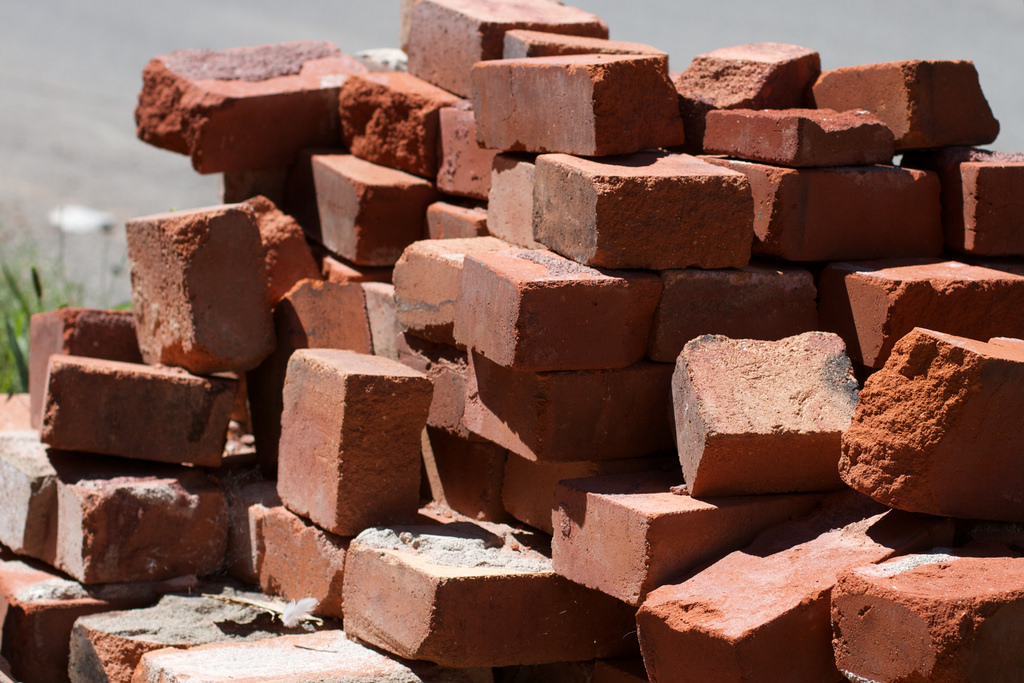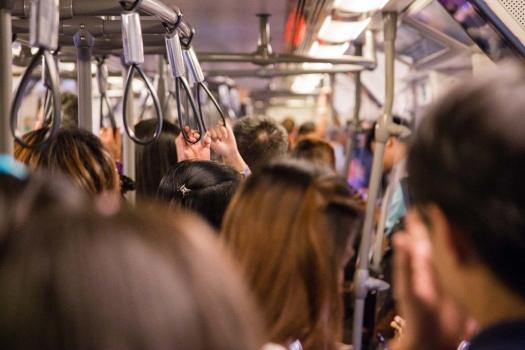
Offices and their interiors have a huge impact on the wellbeing of the visitors or workers that use them. They’re also major government investments ranging across hospitals, libraries, schools or giant departmental offices. Marie Sansom takes a tour of the continued push towards smarter, more sustainable buildings.
There’s a revolution happening in facilities management: it’s driven by technology and it is usurping the old manual, paper-based way of doing things to deliver longer building lifecycles and happier, more productive occupants.
Ashak Nathwani, Honorary Associate in the Faculty of Architecture, Design and Planning at Sydney University says a new standard is being set by the building industry.
Originally led by the Green Building Council of Australia’s star-based system, which governs areas such as water, energy and waste efficiency and construction materials, new sensor technology and building information modelling (BIM) is delivering further rewards. It makes monitoring building performance easier and the problems that do arise can be fixed more smoothly. Sometimes it can anticipate and prevent them happening in the first place.
High performance buildings
Mr Nathwani is an expert on high performance buildings, which he defines as those combining optimum levels of indoor environment quality (IEQ), high levels of water and energy efficiency and waste reduction and strong investment returns.
Let’s look at IEQ, which he says is becoming increasingly recognised as important, alongside a building’s energy efficiency, when rating a building’s performance.
IEQ can cover elements such as lighting, noise levels, air conditioning, acoustics, humidity, air velocity and carbon dioxide concentration and Mr Nathwani says it can directly affect the health, well-being, job satisfaction and productivity of building occupants.
Poor IEQ can translate into medical costs for individuals and absenteeism for organisations; getting it right can translate into productivity gains and better staff retention.
“Lights, air conditioning and air quality can have an impact on people having headaches, cold, flu, asthma, eye and skin irritations,” Mr Nathwani says.
“I believe in the future that government will look not only at the energy rating [of buildings] but for a four-star IEQ rating. Sometimes you can achieve energy ratings at the cost of indoor environment quality.”
If measuring IEQ has historically been a problem, it’s not now.
Mr Nathwani is leading a research project where he has set up two simulated offices, each in its own chamber. The research team then tinker with factors such as the noise levels, lighting and air conditioning, to discover which environment the occupants prefer and how they feel their productivity is affected.
Monitoring is done using new technology called SAMBA, which uses small sensors to monitor levels of thermal comfort, air speed, indoor air quality, and other factors at occupant level, not just using a wall sensor.
For instance, it can detect a cold draught around an office worker’s neck or too much carbon dioxide in the air, which might make occupants sleepy.
The system also generates reports and suggestions on how to fix any aberrations so that facility managers and building owners are alerted to the problem by giving them detailed, real-time reporting.
“If you design a building in the right way: location, glazing and so on – a five or six star building – then it becomes how you look after it and good facilities management,” Mr Nathwani says.
“Then [you need] these type of regular measurements so that you are doing the diagnostics to work out how to have a better environment, better energy management and better financial management.”
Building information modelling
Technology is also making it much easier to manage the entire lifecycle of a building.
Building information modelling (BIM) generates digital representations of the physical and functional characteristics of a place, be it an airport, bridge, school, road, office or factory, far beyond old school two-dimensional technical drawings.
These 5-D models (time and cost being the fourth and fifth dimensions) detail every system in a building, from lifts and lighting to air conditioning, right down who made a light fitting. It can even indicate when a particular piece of equipment needs servicing.
Mr Nathwani says it makes it possible to see how a building performs five to fifteen years down the track.
“It details everything about the building, from the smallest screw to the largest item,” he says.
“It’s very valuable to the facilities manager. BIM is compulsory for all government buildings in the UK and we believe it will be in Australia too. It’s already used extensively in all new commercial buildings.”
BIM means better information for facilities managers to work with, lifecycle costings and analysis over longer periods, easy retrieval of information, better visualisation, increased coordination of construction documents, links to vendor information for specific materials and increased speed of delivery.
The Internet of Things
At the vanguard of achieving further building efficiencies and improving the experiences of the humans inside them is the Internet of Things (IOT), where computer systems and appliances talk to each other without needing human-to-human or human-to-computer interaction.
David Puxty is Head of Australian Operations at SmartBins, a company which makes sensors showing when garbage bins are full and need to be collected.
Mr Puxty says motion sensors can do everything from indicate a meeting room is free to tell you when to clean an office. You could tell visitors to your building whether visitor parking is empty and stream them public transport options to your building.
He says companies no longer have to squeeze as much as they can from their employees or invest in new products to speed up processes or produce productivity gains, now they use technology to run operations more efficiently, from building and pest management to waste ground maintenance and waste.
For example, sensors on the doors of Britain’s Heathrow Airport toilets indicate when 400 people have used them and this triggers an alert that cleaners need to clean them, rather than toilets being checked every few hours.
Sensors can also switch appliances on at off-peak electricity billing times and detect when things are going wrong. For example, they can detect a leaky tap and log the job directly with the maintenance team.
“IOT shows the way objects and people interact. This is all very new. These are really large-scale improvements that can increase efficiency in the order of 15 to 20 per cent,” Mr Puxty said.
“Soft services will be revolutionised. Things are becoming far cheaper to link together and to have sensors throughout buildings to actually provide that intelligence.”
Good design and retrofitting are also driving improvements in public buildings by boosting their sustainability and slashing energy bills, not to mention making the people inside them more comfortable.
Retrofitting
Green Building Council of Australia’s Chief Operating Officer Robin Mellon said many heritage buildings had ‘good bones’, making them ideal candidates for green retrofits.
“Many of Australia’s heritage buildings were constructed during a time before air conditioning, elevators or electric lighting,” Mr Mellon says.
“As a result, architects focused on good thermal mass, high ceilings, passive shading, and large windows for air flow, temperature control and natural light – the same features that ‘green’ designers integrate into new building projects today.”
The advantages of retrofitting government buildings are obvious. Precious resources are conserved and the upheaval of finding and moving to new premises avoided.
“More and more people are recognising that we need to make do with the spaces we have,” Mr Mellon says.
“Existing buildings already represent an investment of resources in terms of energy, water and materials.
“By conserving them we can reduce energy usage associated with demolition, waste disposal and new construction, as well as preserve embodied energy – the energy consumed by the processes associated with the production of a building, from the mining and manufacturing of materials and equipment, through to the transportation of materials and administrative functions.”
Design
Neil Durbach, Principal at Sydney architect firm Durbach Block Jaggers, said legislation such as the GBCA’s star system had already lifted building and design standards and increased users’ and clients’ expectations.
He said offices interiors quite often resembled domestic interiors and new technology was usually subtly incorporated into the infrastructure, rather than on show.
“It just feels that it isn’t a bureaucratic, up tight environment,” Mr Durbach said.
“You’re at your most creative in a really comfortable, happy environment. I think happiness is a business asset.”
Mr Nathwani said replicating natural environments was also popular.
“We spend 90 per cent of our time in artificial environments indoors. One of the trends has been to recreate nature, for example, breakout areas without air conditioning, balconies, natural ventilation and greenery.”
Mr Durbach says other strong, continuing trends included letting as much natural light in as possible, creating different spaces, considering the way people congregated and creating beautiful kitchens and chill out areas which made work feel more like leisure.
“The idea of hermetically sealed glass boxes is finished. You would don’t want to feel like you can’t open a window or sit outside,” he says.
“[Your environment] makes a huge difference, to feel that incredible care gone into making your environment as meaningful and as beautiful as possible. You respond to that.
Mr Durbach said the trap some public buildings fell into was one of hyper functionality, “where’s there’s no space for any architectural expression of joy or mystery or happiness”.
This story first appeared in Government News magazine in April/May 2015.
Comment below to have your say on this story.
If you have a news story or tip-off, get in touch at editorial@governmentnews.com.au.
Sign up to the Government News newsletter



